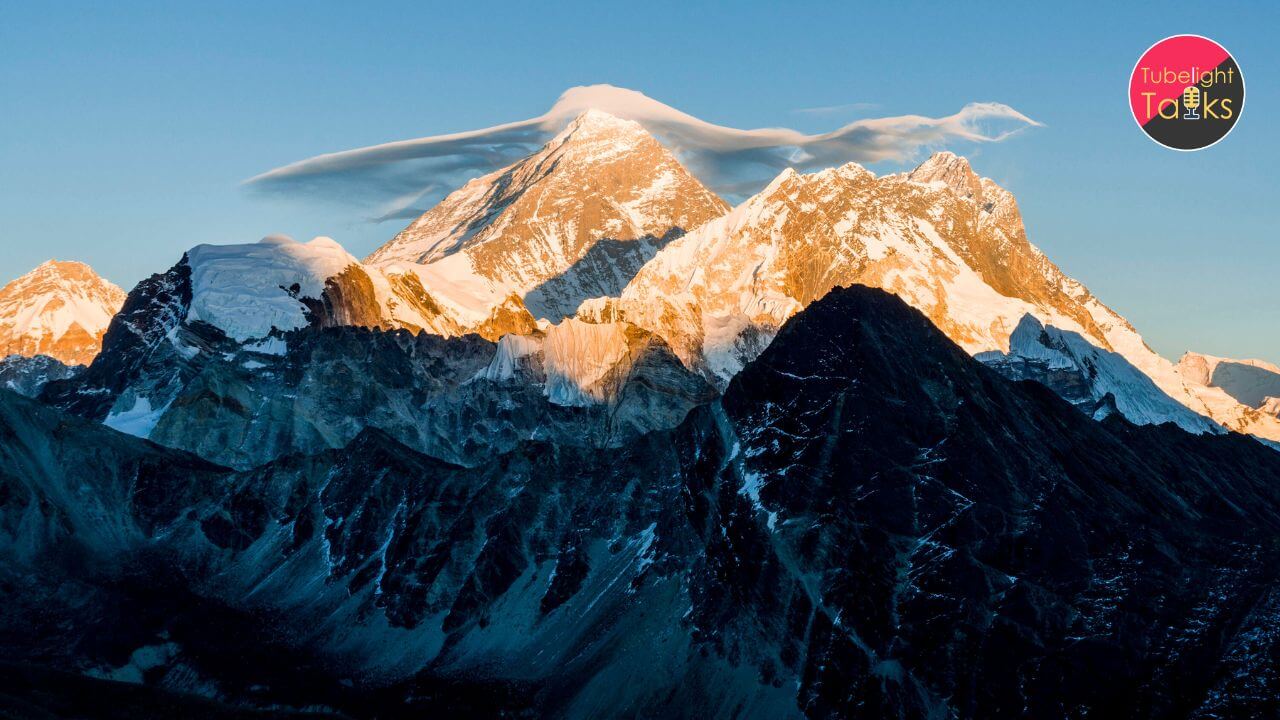The movement of tectonic plates isn’t the only reason why mountains like Mount Everest and Makalu continue to grow. Recent studies have shown that rivers such as the Arun and Kosi are also playing a significant role in the rising height of the Himalayas. The process, known as isostatic rebound, causes the Earth’s crust to rise as surface weight is reduced by erosion. These combined geological forces are contributing to the steady uplift of these majestic peaks.
Main Points Related to the growing height of Mt.Everest :
1. Geologists have identified new factors contributing to the rising height of Mount Everest.
2. Erosion from rivers like the Arun plays a significant role in this process.
3. The phenomenon of isostatic rebound explains how the Earth’s crust lifts in response to reduced surface weight.
4. Neighboring peaks such as Lhotse and Makalu are also experiencing uplift.
Majestic Mt. Everest:
Mount Everest, also known as Sagarmatha in Nepal and Chomolungma in Tibet, is a symbol of natural grandeur. As the tallest peak on Earth, its sheer size and beauty can captivate from miles away. However, Everest’s magnificence is not just visual; it continues to grow due to ongoing geological processes.
History of Measuring the Height of the Himalayas
The first major survey of the Himalayas, conducted by the British in the mid-19th century, measured Mount Everest at 8,840 meters. In 2005, China measured it at 8,844.43 meters. In 2020, a joint survey by Nepal and China confirmed the latest official height of Mount Everest 8,848.86 meters, including the snow cap.
Why Is the Height of Mount Everest Increasing?
Mount Everest’s height is increasing due to a combination of tectonic movements and new factors uncovered by geologists. About 50 million years ago, the collision of the Indian and Eurasian plates led to the formation of the Himalayas, and these plates are still moving today.
However, recent studies, led by Jin-Gen Dai (geologist) , reveal that rivers like the Arun and Kosi, through a process called isostatic rebound, are also contributing to the uplift of Everest.
■ Also Read: Sunita Williams Breaks World Record in Space, Inspiring Future Generations
Isostatic rebound occurs when erosion removes material from the surface, lightening the crust, which then rises. The Arun and Kosi rivers, located around 75 kilometers from Everest, have significantly eroded the surrounding area, helping to lift the Earth’s crust.
How Fast Is Its Height Increasing?
The Indian Plate is moving northward at a rate of 5 cm per year, and the Himalayas are rising by about 4 mm per year. Though these changes are incremental, they show the continuous interaction of tectonic movement and isostatic rebound, contributing to the height increase of Mount Everest.
Climbing Challenges
Climbing Mount Everest is an extreme challenge due to its thin atmosphere, unpredictable weather, and frequent storms. Wind speeds can exceed 160 km/h, particularly in the winter months, and the jet stream often flows directly over the summit, adding to the difficulty.
About the Climbing Routes
1. South Col Route (Nepal):
This historic route, taken by Sir Edmund Hillary and Tenzing Norgay in 1953, is the most popular. Climbers pass through several camps, including the treacherous Khumbu Icefall, on their ascent to the summit.
2. North Ridge Route (Tibet):
This less-frequented route is more technically challenging, requiring climbers to navigate the Northeast Ridge and the “Second Step,” a steep rock feature.
Hazards of Climbing Everest
Climbers face serious health risks, including Acute Mountain Sickness (AMS), High-Altitude Cerebral Edema (HACE), and High-Altitude Pulmonary Edema (HAPE). AMS symptoms, such as headaches and nausea, can progress to life-threatening conditions like HACE or HAPE. Rapid descent is crucial for treatment.
Economic Contribution of Mountaineering to Nepal’s GDP
Mountaineering is a significant contributor to Nepal’s economy. In 2023, the Nepal government earned around $5.8 million from mountaineering permits, with adventure tourism contributing about 6.7% to the country’s GDP and generating approximately $2.2 billion annually.
Growing height of Mount Everest FAQ:
1. What is the height of Mount Everest?
The official height is 8,848.86 meters, as measured in 2020 by China and Nepal.
2. How long does it take to climb Mount Everest?
It typically takes around two months to climb Mount Everest, due to the need for acclimatization and preparation.
3. What is the best time to climb Mount Everest?
The best time is during the pre-monsoon (April to May) and post-monsoon (September to October) seasons.
4. Is a permit required to climb Mount Everest?
Yes, climbers need to obtain permits from the governments of Nepal and Tibet.
5. How many people have successfully summited Mount Everest?
Approximately 11,900 people have successfully reached the summit since 1953.
6. Who is Jin-Gen Dai?
Jin-Gen Dai is a geologist affiliated with the China University of Geosciences. He is known for his research on the geological dynamics of the Himalayas, particularly the processes contributing to the height increase of Mount Everest. His recent studies highlight the role of river erosion and isostatic rebound in the uplift of Everest and other nearby peaks.










